Jack: I’m quite sure that you, like me, have eaten a fair amount of ice cream in your time. There’s ample choice, even for the pickiest eaters – if you’re diabetic… go sugar free. If you’re vegan – maybe it’s milk free for you… examples abound.
There’s usually an ice cream for everyone, and pretty much everybody enjoys one kind or another…riiiight?
Yet, despite this, I’d never actually taken the time to find out how exactly ice cream is made, or seen the kind of place that produces it…
So, when I got to speak to Louise Holmes from the Yummy Yorkshire Ice Cream Company, a milk wholesaler turned artisanal ice cream outfit, my curiosity was piqued!
I managed to get Louise to tell us quite a lot about conventional, artisanal ice cream is made (and it is apparently easier than you might think!)
So, have I managed to pique your culinary curiosity yet? If so, read on…
Meet Louise Holmes (she is nice and knows about ice cream)
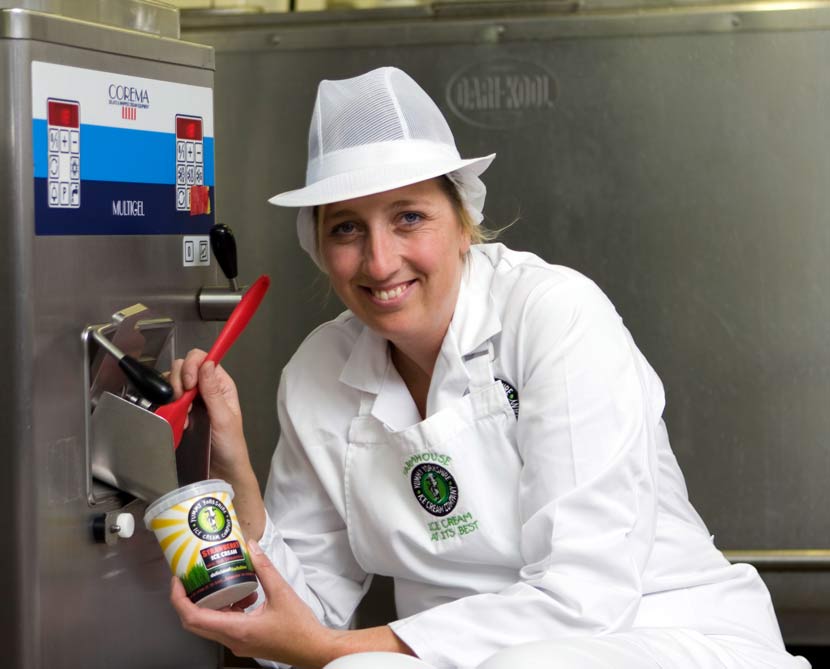
Louise: In 2007 we made the decision to diversify our third generation milk retailing business and put the surplus of cream produced on the farm to good use. We decided that ice cream might be something to try and this is where it all began.
With an investment of £19,000, we converted two redundant calf pens on the farm and opened our own ice cream parlour and coffee shop.
We bought ice cream making equipment and a consultant came with it to help us devise our base recipe. It’s a science to create a recipe that makes sure the fats and the sugars are balanced. I’m sure everyone needs help doing this bit!
After that it’s recipe creation and I would describe this as the art! Trial and error is the best method. We gave loads of ice cream to friends for honest and constructive feedback.
Though making the ice cream is easy…understanding how to treat ice cream once it is made is harder. It’s very important to avoid ice crystals and protect the shelf life of your ice cream. You can teach all of this to other people but in my mind they have to be passionate about what they are doing to actually make it work.
The nitty gritty
There are two main processes involved in making ice cream; cooking and cooling. We start the process in our batch pasteuriser…
First, Cooking
It’s a big tank with a large heating element built into the sides. We fill this machine with lots of milk from our cows, some cream and then start the cooking process.
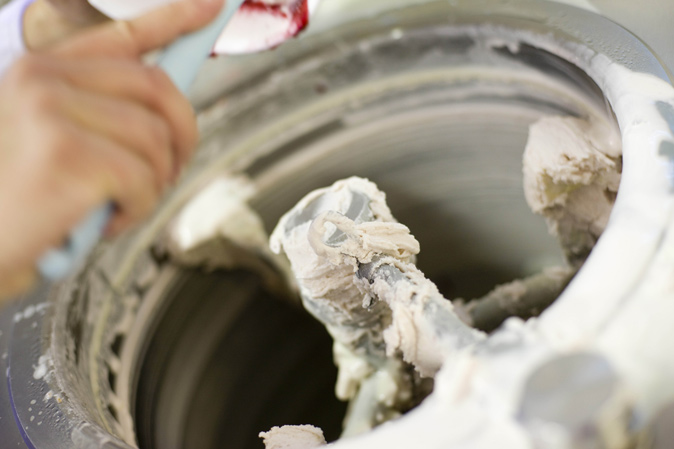
The machine has a small rotating blade that mixes this liquid and pushes it around the machine so that mix is evenly heated. When the temperature reaches around 400c we then start to add our dry ingredients (sugar, dextrose, skimmed milk powder and stabiliser)..
To ensure these ingredients mix in properly we use a large stick whisk to break down any lumps of sugar. Then we leave the machine to do its thing. It heats to 850C, holds it there for a few seconds and then starts the cooling process. This cooling process is rapid so the mix spends as little time as possible in the temperature danger zone (50c – 640c).
The machine takes the mix to around 40c and holds it there agitating every 20 mins to ensure the temperature of the mix is even. We have a temperature datalogger constantly in the mix so that the temperature is recorded throughout the entire process.
This mix is now like custard… it smells just like it when warm. This is now called a ‘base mix’ and it forms the basis of every recipe we make – with the exception of chocolate which has cocoa powder cooked into the mix.
This base mix is left to age over night so that all the ingredients do what they need to do and then we start to use this the next morning.
Then, Cooling
The next day we open the tap on the batch pasteuriser, empty some of the base mix into stainless steel buckets and then pour this into the batch freezer. This is where the magic starts to happen. The mix is at about 4/50c at this stage.
We add our ingredients for whatever flavour we are making and then start the freezing process. The batch freezer has a large beater blade with three arms that drives the liquid up the side of the cold barrel freezing it and gently whisking it at the same time.
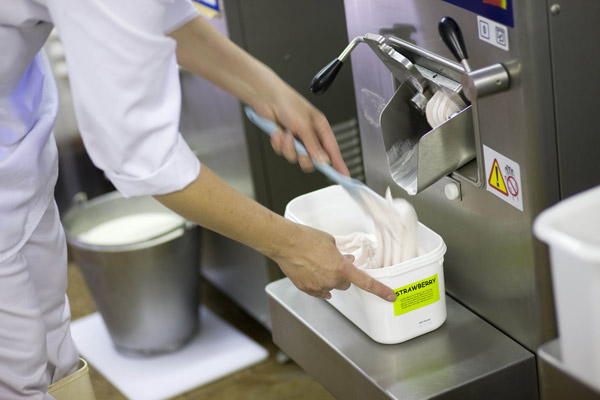
At this point we are freezing the liquid and the blades have little beaters on the side which move about introducing air… which turns the liquid into ice cream.
When the mix reaches -70c and it nicely formed (it’s a bit like whisking meringues) then we start to extract the ice cream. The machine blades turn in the opposite direction, driving the ice cream downwards and out of a small chute. This is when we fill the packaging.
One we have filled a tub it goes into the blast freezer. This looks a bit like a big freezer you would have at home but this runs at -340c. The ice cream is put in here until it goes rock hard. This super freezes the product as quick as possible preventing ice crystals forming in the freezing process.
Once that’s done, the ice cream is set it is moved to a standard storage freezer running at -180c ready for sale.
Developing Flavours And Getting Inspired
Development is trial and error; we are always looking for inspiration and quite often we gather random ingredients for a creation day. We set aside a bit of time every so often to make as many new flavours as we can. Some are completely wacky and don’t work- we made one using a well-known brand of cough medicine but decided it was just wrong!
But we’ve made others that absolutely work. If we think it’s a goer, then we put a small amount in a pan and put it in our ice cream parlour for scoop serving and see what happens! We can monitor how the ice cream performs (i.e: does it scoop ok?), get some feedback from consumers and importantly see how quickly it sells.
We have started to formalise this process and we now host an ‘Ice Cream Dream Team’ event three times a year where people join us to a ‘taste journey’ of various flavours, giving us feedback as we go.
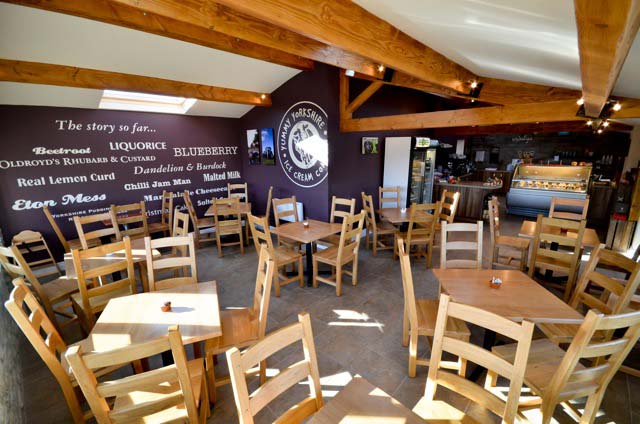
The importance of tasting and ingredients
We still make ice cream the same way; it’s still artisan, the machines have just got bigger…
We couldn’t work with a machine if we couldn’t lift the lid and taste the ice cream at any point during the process to check that the product/flavour is good. We spend a lot of time creating new recipes and we are inventive with it…we have become well known for this with beetroot, black garlic & dark chocolate and even carrot & cardamom appearing on our flavour lists.
We are also proud to work with other Yorkshire artisan producers who are equally as proud as us of their product. We’ve got some fantastic producers in Yorkshire and we are really blessed to create great ice cream with ingredients such as Lottie Shaw’s Seriously Good Yorkshire Parkin.
Overrun
Importantly, with our ice cream, we have with a very low overrun. This term is used to describe how much air there is in the ice cream. The more air, the cheaper the ice cream is to produce…after all you are paying for fresh air. You can tell how much air there is by how light the tub is…some don’t feel like they have anything in it!
Milk
The quality of the milk you use is an important factor in producing a good ice cream – the same with most things… it’s all about the quality of all your ingredients. Milk protein can vary in dairy herds so it’s all about good management of their diet. We work very closely with our cereal supplier to ensure that our cows are in peak condition.
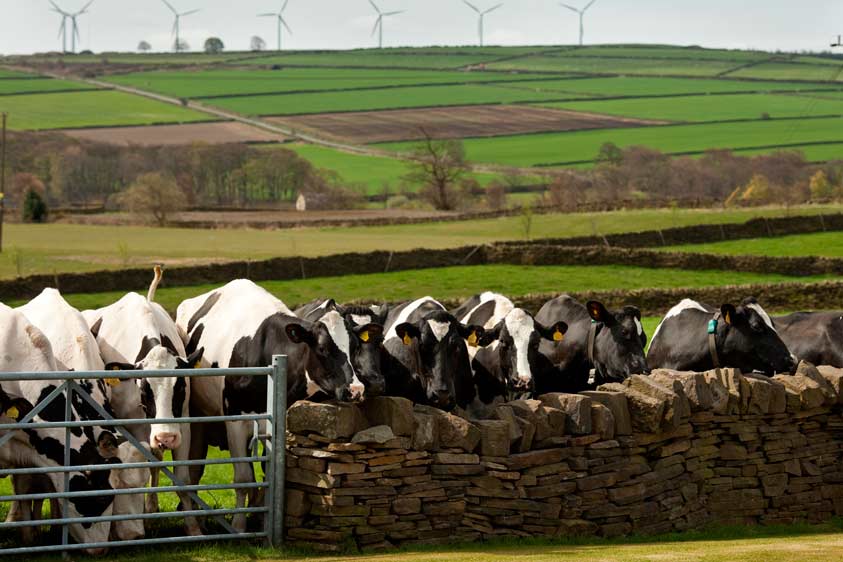
We also believe that having the main ingredient in our product so near (the next building) then there is no degradation in quality through transport – plus we know what condition our cows are in.
The cows graze in the field around us and when the cows are milked in the building next door… you can’t get better than that!